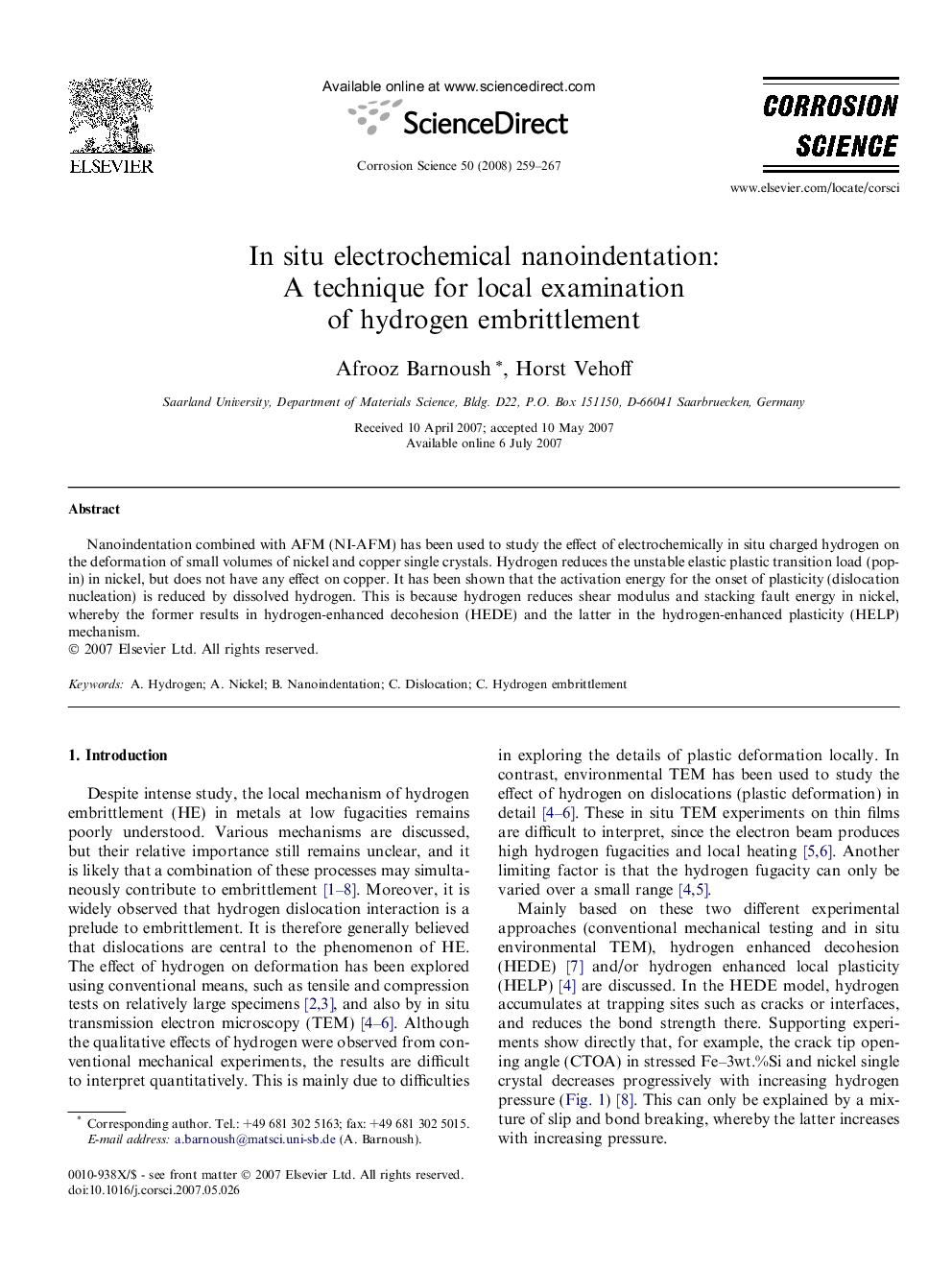| Article ID | Journal | Published Year | Pages | File Type |
|---|---|---|---|---|
| 1471553 | Corrosion Science | 2008 | 9 Pages |
Abstract
Nanoindentation combined with AFM (NI-AFM) has been used to study the effect of electrochemically in situ charged hydrogen on the deformation of small volumes of nickel and copper single crystals. Hydrogen reduces the unstable elastic plastic transition load (pop-in) in nickel, but does not have any effect on copper. It has been shown that the activation energy for the onset of plasticity (dislocation nucleation) is reduced by dissolved hydrogen. This is because hydrogen reduces shear modulus and stacking fault energy in nickel, whereby the former results in hydrogen-enhanced decohesion (HEDE) and the latter in the hydrogen-enhanced plasticity (HELP) mechanism.
Related Topics
Physical Sciences and Engineering
Materials Science
Ceramics and Composites
Authors
Afrooz Barnoush, Horst Vehoff,
